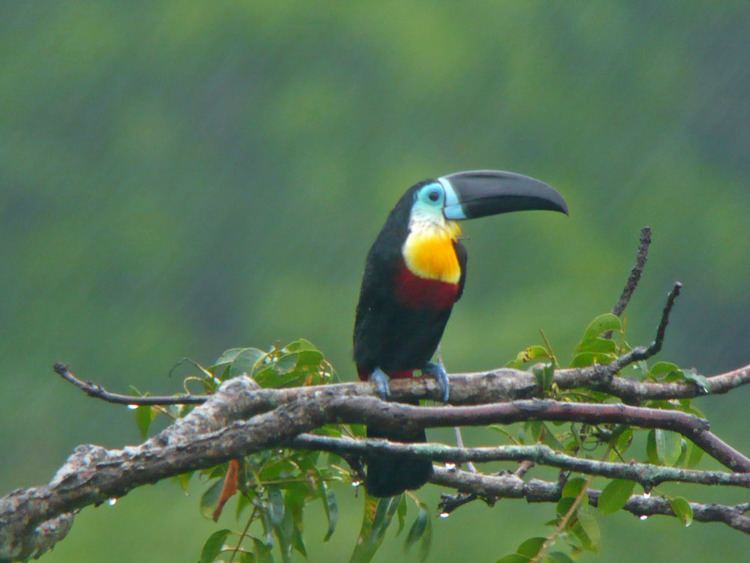Higher classification Ramphastos | Phylum Chordata Family Ramphastidae Scientific name Ramphastos vitellinus Rank Species | |
Similar Toucan, Bird, Ramphastos, Green‑billed toucan, Keel‑billed toucan | ||
Channel billed toucan
The channel-billed toucan (Ramphastos vitellinus) is a near-passerine bird in the family Ramphastidae found in Trinidad and in tropical South America as far south as southern Brazil and central Bolivia.
Contents
- Channel billed toucan
- Tucano de bico preto channel billed toucan amazon
- Subspecies
- Description
- Habitat
- Behavior
- References

Tucano de bico preto channel billed toucan amazon
Subspecies
Three subspecies are recognized:

These subspecies were previously considered separate species, but all three, along with the citron-throated toucan, will interbreed freely wherever they meet. However, the subspecies R. v. ariel is closer to R. v. culminatus than to the nominate, and are by some already considered close to distinct species status. As R. v. ariel was described before R. v. culminatus, if separated they would become Ramphastos ariel ariel and R. a. culminatus. There also exists an isolated population in eastern Brazil. It looks very similar to, and has traditionally been considered part of, R. v. ariel, but molecular analysis suggests that it has been isolated for a long time and is a yet-undescribed separate subspecies or possibly even species (Weckstein, 2005).
Description

Like other toucans, the channel-billed is brightly marked and has a huge bill. It is typically 48 cm (19 in) long with a 9–14 cm (3½-5½ in) bill. It weighs 300–430 g (11–15 oz)

Wherever the distributions of the subspecies meet, individuals with features that are intermediate compared to above described races are common due to hybridization. Some of these intermediate populations have sometimes been awarded subspecies status, e.g. theresae for the population in north-eastern Brazil and pintoi for populations in south-central Brazil (both are culminatus-ariel intergrades).
Habitat
Found in forest and woodland. Prefers humid regions, but locally extends into drier regions (esp. along rivers). Mainly in lowlands, but locally to an altitude of 1,700 m (5,600 ft).
Behavior
This species is an arboreal fruit-eater, but will take insects small reptiles, eggs, and frogs. The call is a croaking "cree-op cree-op cree-op".
The parents are both active in raising the young. The white eggs are laid in a high unlined tree cavity. There is have a gestation period of 18 days, and the parents both incubate for 15 to 16 days. However, they can be impatient sitters, often leaving their eggs uncovered for hours at a time. Newborn toucans remain in the nest after hatching. They are blind and naked at birth, and their eyes open after about 3 weeks. They have short bills and specialized pads on their heels to protect them from the rough floor of the nest. The feathers do not begin to expand until they are nearly 4 weeks old. They are helpless and unable to leave the nest for about 8 weeks, dependent upon both parents to feed them. After this, the young can care for themselves. They begin to leave the nest after 40 to 50 days, depending on size.
